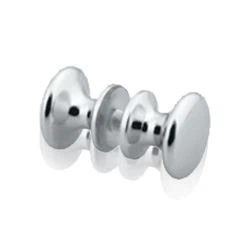Hey there! As a supplier of CNC Lathe Components, I've been diving deep into the world of CNC lathes for years. One of the most crucial parts of a CNC lathe is the control panel. It's like the brain of the machine, dictating every move and operation. In this blog, I'm gonna break down the functions of the control panel in CNC lathe components.
1. Program Input and Editing
First off, the control panel is where you input and edit the programs that tell the CNC lathe what to do. You can use a variety of programming languages, like G-code, which is super common in the machining world. With the control panel, you can type in the commands, check for errors, and make adjustments on the fly. It's like having a virtual programming studio right at your fingertips.
Let's say you're making a custom part for a client. You'll create a program that specifies the dimensions, the cutting paths, and the speed of the lathe. You enter this program into the control panel, and it's ready to go. But what if you realize there's a mistake in the program? No problem! You can quickly edit it right on the control panel, without having to start from scratch.
2. Machine Operation Control
The control panel gives you complete control over the operation of the CNC lathe. You can start and stop the machine, adjust the spindle speed, and control the feed rate. These are all essential functions that determine the quality and efficiency of the machining process.
For example, if you're working with a hard material, you might need to slow down the spindle speed to avoid overheating and ensure a smooth cut. You can easily make this adjustment on the control panel. Similarly, if you want to increase the feed rate to speed up the machining process, you just tweak the settings on the panel.
3. Parameter Setting
Another important function of the control panel is parameter setting. You can set various parameters, such as the tool offset, the coordinate system, and the cutting depth. These parameters are crucial for accurate machining.
Let's talk about tool offset. Different tools have different dimensions, and you need to account for these differences when programming the CNC lathe. You can set the tool offset on the control panel, so the machine knows exactly where the tool is in relation to the workpiece. This ensures that the cuts are made in the right place, every time.
The coordinate system is also set on the control panel. You can define the origin of the coordinate system, which is the starting point for all the machining operations. This allows you to precisely position the workpiece and the tools, resulting in high-quality parts.
4. Monitoring and Diagnostic Functions
The control panel is equipped with monitoring and diagnostic functions that help you keep an eye on the machine's performance and detect any issues. You can monitor things like the spindle speed, the feed rate, and the temperature of the machine.
If there's a problem, the control panel will display an error message, indicating what's wrong. This makes it easy to troubleshoot and fix the issue quickly. For example, if the spindle speed is too high, the control panel might show an over-speed warning. You can then adjust the speed to avoid any damage to the machine.
5. Tool Management
Tool management is another key function of the control panel. You can store information about the tools, such as their type, size, and cutting edge geometry. This information is used to optimize the machining process and ensure that the right tool is used for the job.


When you need to change a tool, the control panel can guide you through the process. It can tell you which tool to use, where to find it in the tool magazine, and how to install it correctly. This saves time and reduces the risk of errors.
6. Communication and Data Transfer
In today's digital age, communication and data transfer are essential. The control panel allows you to connect the CNC lathe to a computer or a network. You can transfer programs, data, and settings between the machine and the computer, making it easier to manage and update the machining process.
For example, you can use a USB drive to transfer a new program from your computer to the control panel. Or, you can connect the lathe to a network and access the programs and data stored on a server. This flexibility makes it easier to collaborate with other team members and improve the overall efficiency of the machining process.
7. Safety Functions
Safety is always a top priority in any machining operation. The control panel is equipped with various safety functions to protect the operator and the machine. For example, there are emergency stop buttons that you can press to immediately stop the machine in case of an emergency.
The control panel also has safety interlocks that prevent the machine from operating if certain conditions are not met. For example, if the door of the machine is open, the control panel will prevent the spindle from starting. This ensures that the operator is not exposed to any dangerous moving parts.
Conclusion
As you can see, the control panel plays a vital role in the operation of a CNC lathe. It's not just a simple interface; it's a powerful tool that gives you complete control over the machining process. Whether you're a small workshop or a large manufacturing plant, understanding the functions of the control panel is essential for getting the most out of your CNC lathe.
If you're in the market for CNC Lathe Components or Investment Casting Parts, I'd love to have a chat with you. Feel free to reach out, and we can discuss your specific needs and how we can help you achieve your machining goals.
References
- "CNC Machining Handbook"
- "Modern Manufacturing Technology"
- Industry standards and best practices in CNC machining



